Find out what to do if the Remote feature on your iPhone or iPad isn’t working with your Apple TV.
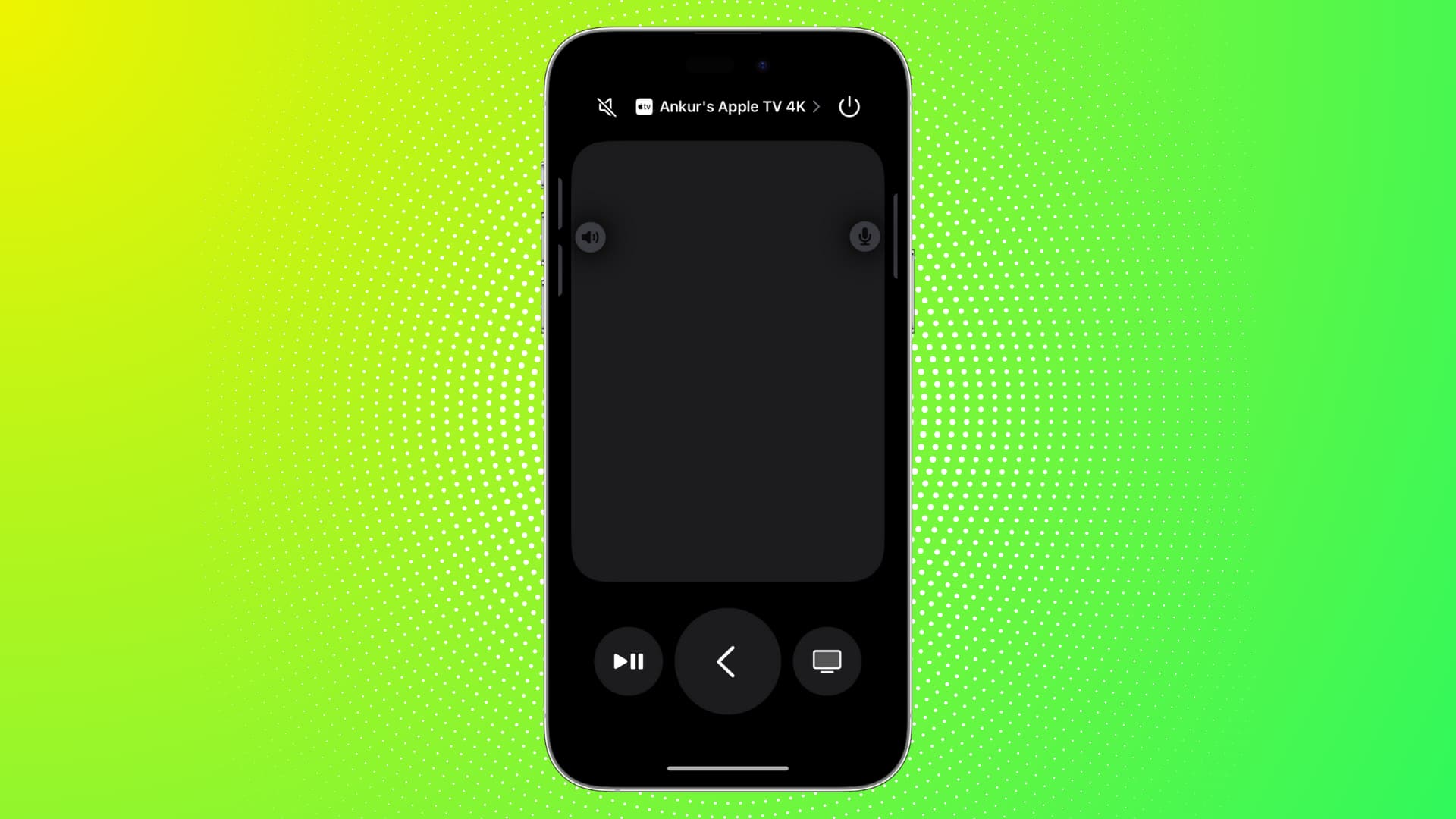
Every Apple TV comes with a physical remote called the Siri Remote, but if it isn’t working or you can’t find it, you can use your iPhone or iPad to navigate your way on Apple TV. If for some reason this is failing to work, follow the tips below to fix it in no time.
1. Choose the right Apple TV
If you have more than one Apple TV in your house or office, make sure you select the right one by following these steps.
- Open Control Center on your iPhone or iPad and tap the Apple TV Remote icon. If it isn’t there, add it first.
- Tap Choose a TV or the current Apple TV name from the top and select the right one, like the Living Room, Bedroom, Conference Room, or whatever you’ve named it.

By default, your Apple TV goes to sleep after a period of inactivity, provided you haven’t set the sleep time to never. Once the Apple TV is in sleep mode, you won’t see the tiny white status light on its front, but still, your Apple TV should continue to be responsive to the actual Siri Remote, as well as appear inside the TV Remote app on iPhone and iPad. Simply press and hold the power button to switch on your Apple TV.
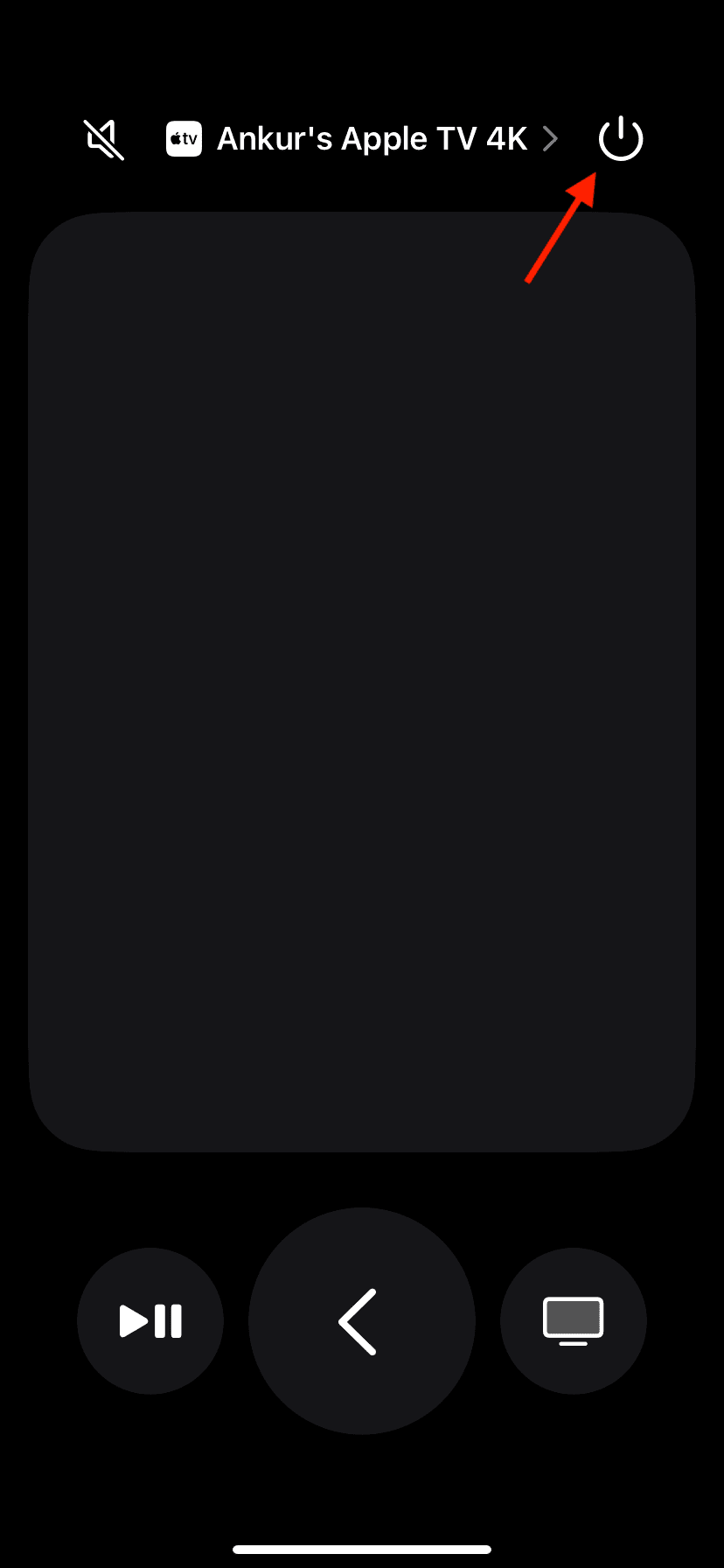
3. Make sure all devices are connected to the same Wi-Fi network
While the Siri Remote connects to Apple TV via Bluetooth, the Remote feature on your iPhone or iPad uses Wi-Fi. This means your iPhone or iPad won’t function as a remote if either device isn’t connected to Wi-Fi or is on a different network.
- Go to the Settings app on your iPhone or iPad and note the network name next to Wi-Fi.
- Next, go to Apple TV Settings > Network and make sure it’s also connected to the same Wi-Fi network as your iPhone or iPad.

Note: In my tests, I found that your iPhone or iPad will work as the Apple TV Remote even if both devices are on different bands of the same network. For instance, it works when my iPhone is on the 2.4 GHz band and Apple TV is on the 5 GHz band. Still, it’s better to have them on the same band.
4. Switch Airplane mode on and off
Minor iOS network issues may prevent your iPhone from communicating with the wireless network and, by extension, your Apple TV. Toggling Airplane mode on and off should help.
5. Use the iPhone or iPad of a user added to the Apple TV
If you’re the sole Apple TV user, make sure the Apple Account on it is the same as your iPhone or iPad. You can check via iPhone Settings > Apple Account. And on Apple TV, go to Settings > Users and Accounts. From here, select the default user, which is most likely you, and ensure you see your correct Apple ID on the screen.
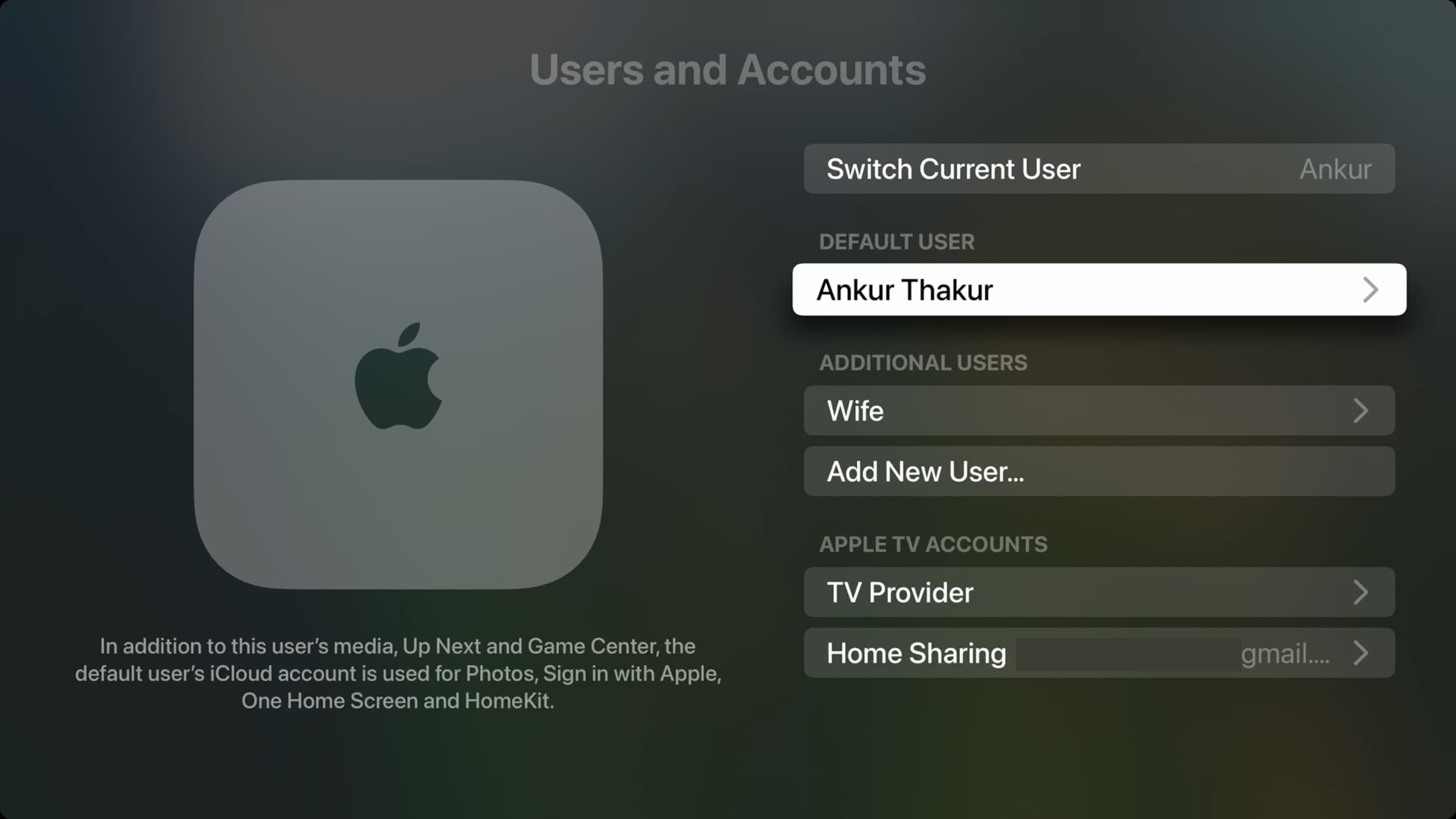
If you’ve added other users, like your spouse, to your Apple TV, you can also use their iPhone or iPad as the remote. Additional users have their own section under Apple TV Settings > Users and Accounts.
Note: Other iPhones on the same Wi-Fi network as your Apple TV can find your Apple TV in the Remote app, but if you tap it, the app gets perpetually stuck on the “Connecting” screen.

6. Force quit and reopen the Apple TV Remote app
The Apple Remote feature doesn’t have a dedicated app icon, but it does appear like an app card in the App Switcher after you launch it from the Control Center button.
- Open the Apple TV Remote feature from your iPhone or iPad Control Center if it isn’t already.
- Now, enter App Switcher and swipe up over the Remote tile.
- After 5 seconds, reopen it from iOS Control Center.

7. Restart your devices
This is an important step that you must pay attention to.
Start by turning your iPhone or iPad off and back on again. While your device restarts, switch off the Apple TV from its main power source and switch it back on after 15 seconds—don’t use the Restart option in Apple TV Settings > System.
8. Turn your Wi-Fi router off and on
Oftentimes, your router may be the culprit for all your network inconveniences, and restarting it using the main wall power switch can certainly help.
9. Update your iPhone, iPad, and Apple TV
Open Settings on your iPhone or iPad and go to General > Software Update to get the latest version of iOS or iPadOS. Similarly, navigate to your Apple TV Settings > System > Software Update to install the most recent version of tvOS.
10. Know where you’re in the TV interface
The Remote feature on your iPhone or iPad may be working perfectly, but you’re actually lost in the submenus. Try hitting the back button, and then you can navigate using the touchpad.
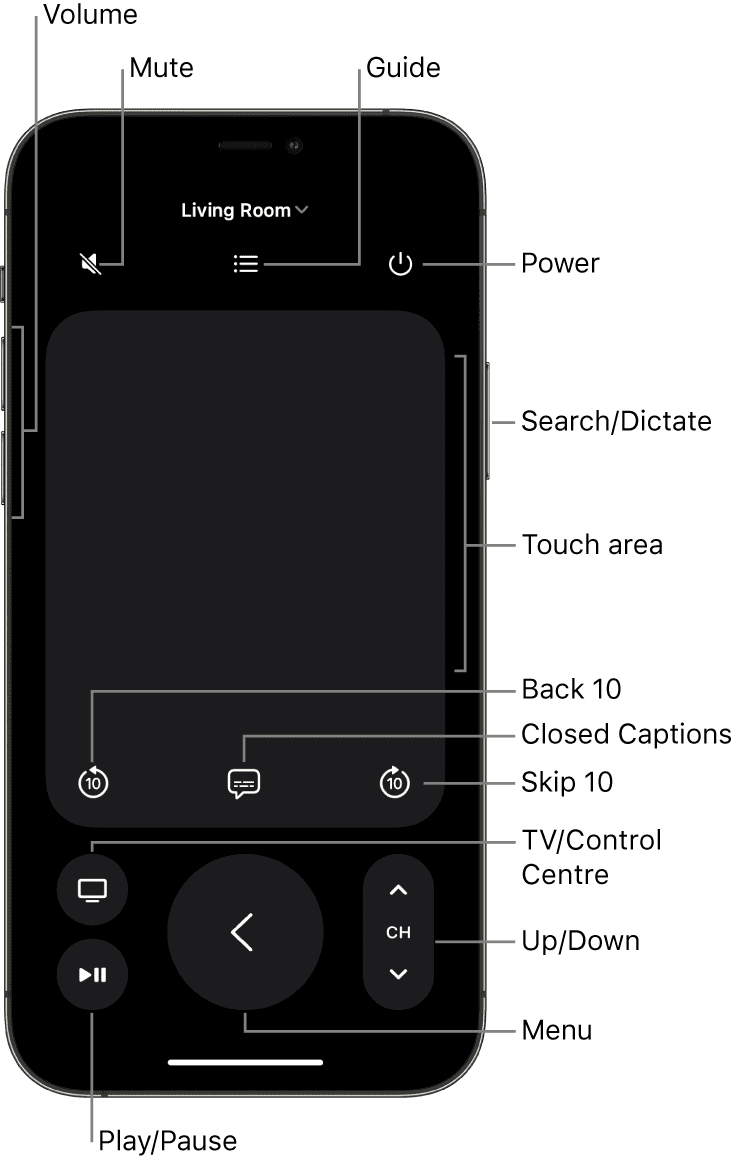
11. Remove extra devices paired with your Apple TV
If the problem still continues, follow these steps to refresh the connection for previously paired remotes and devices.
- Use your Siri Remote to go to Apple TV Settings > Remotes and Devices > Remote App and Devices.
- Select your iPhone or iPad from the list of paired devices and click Forget This Device > Remove.
- You can repeat steps 2 and 3 to get rid of all unnecessary devices. They may include your Mac or older iOS devices where you used the standalone Remote app or Home Sharing.
- Restart your iPhone or iPad and your Apple TV.
- Now, tap the Remote icon in your iPhone or iPad Control Center, and it should automatically connect to your Apple TV, given they are on the same Wi-Fi network.
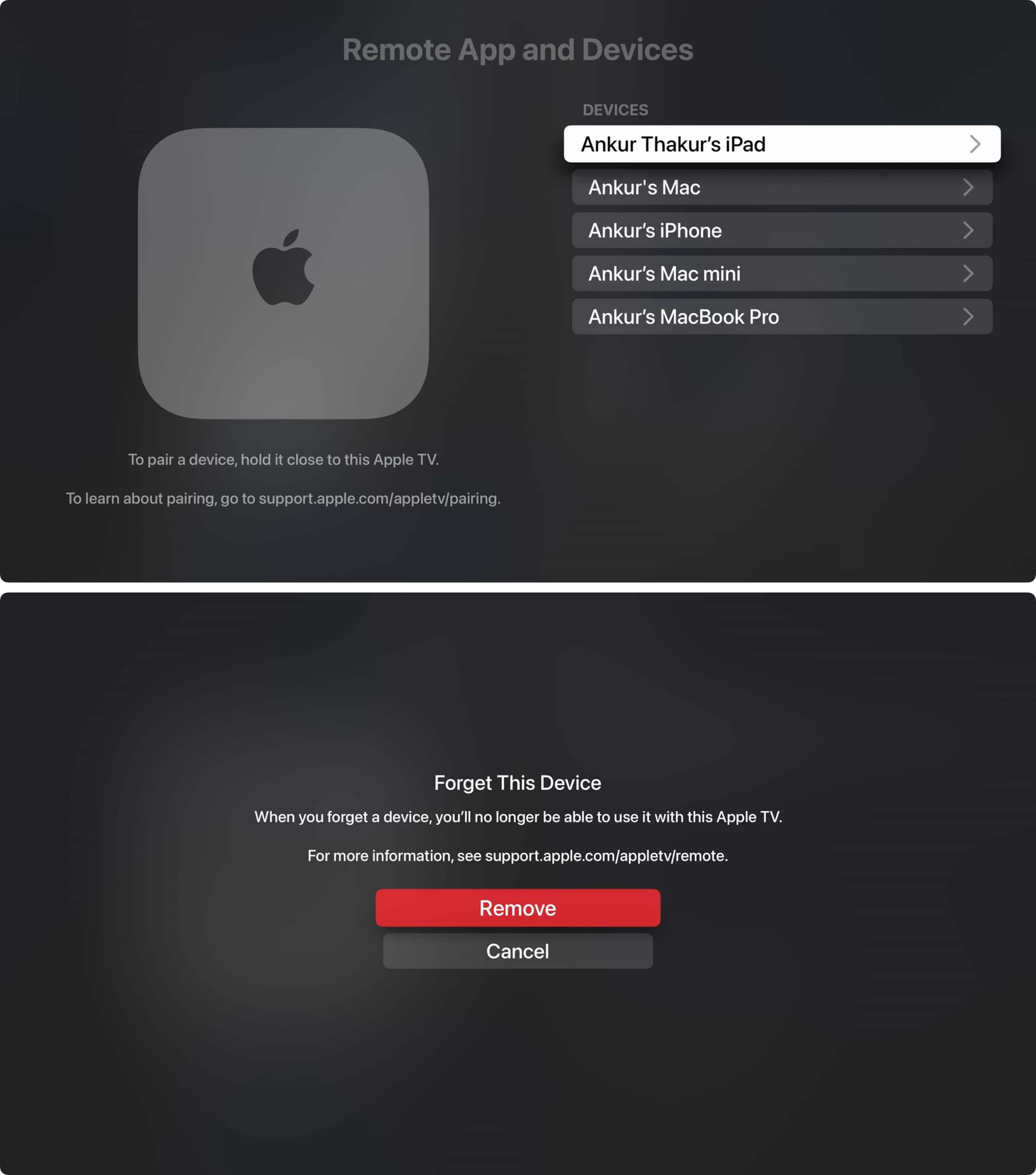
12. Toggle off Home Sharing
While there is no apparent correlation, if you use Home Sharing to view your Mac’s photos or media on your Apple TV, then go to your computer’s Home Sharing settings screen and turn it off. You can also turn it off from your Apple TV from Settings > Users and Accounts > Home Sharing. Hopefully, this does the trick.
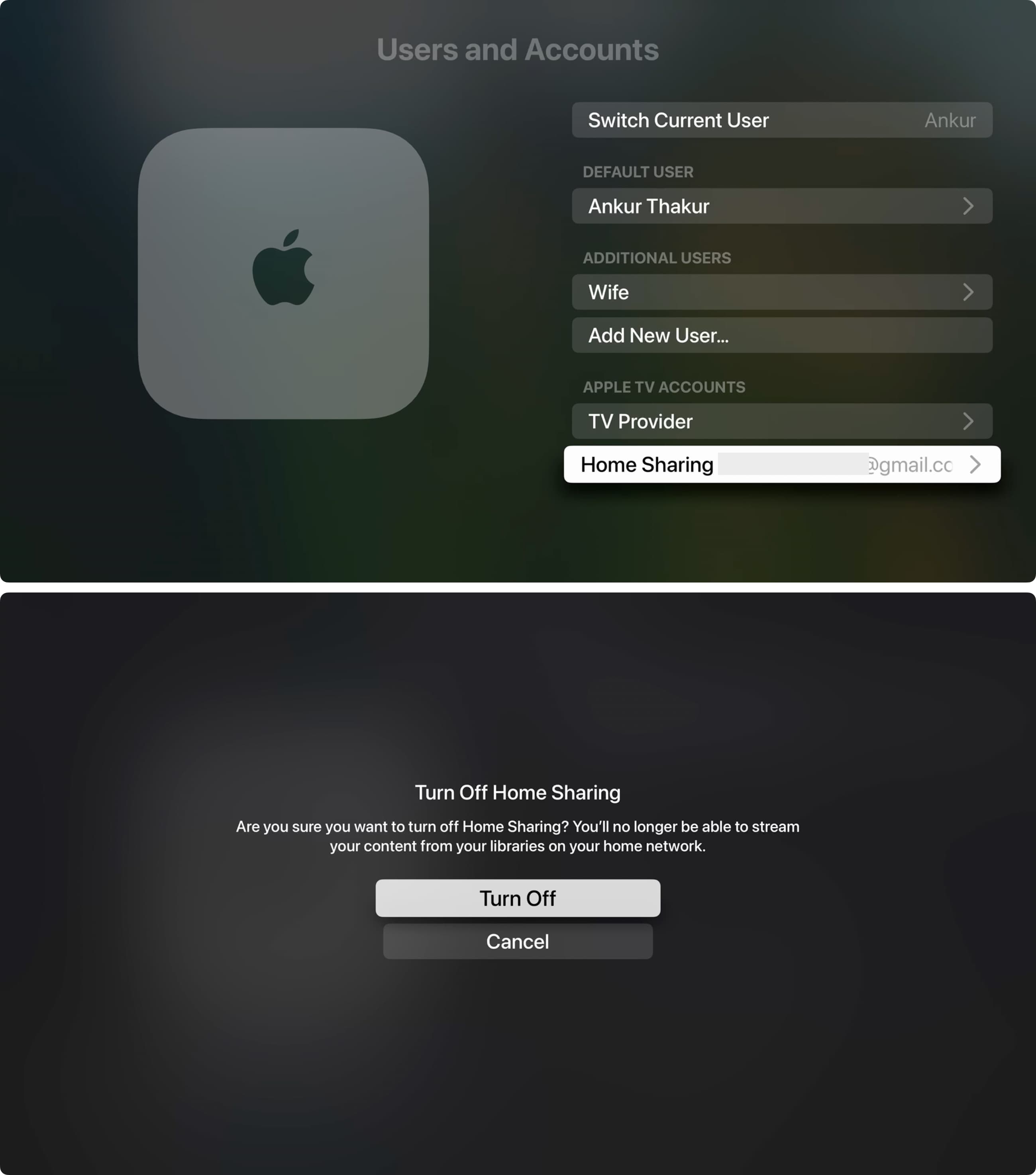
13. Reset and set up your Apple TV again
It likely won’t come down to this, but if the problem remains unsolved after trying all of the above tips, you can reset your Apple TV from Settings > System > Reset > Reset or Reset and Update. After that, set it up again.
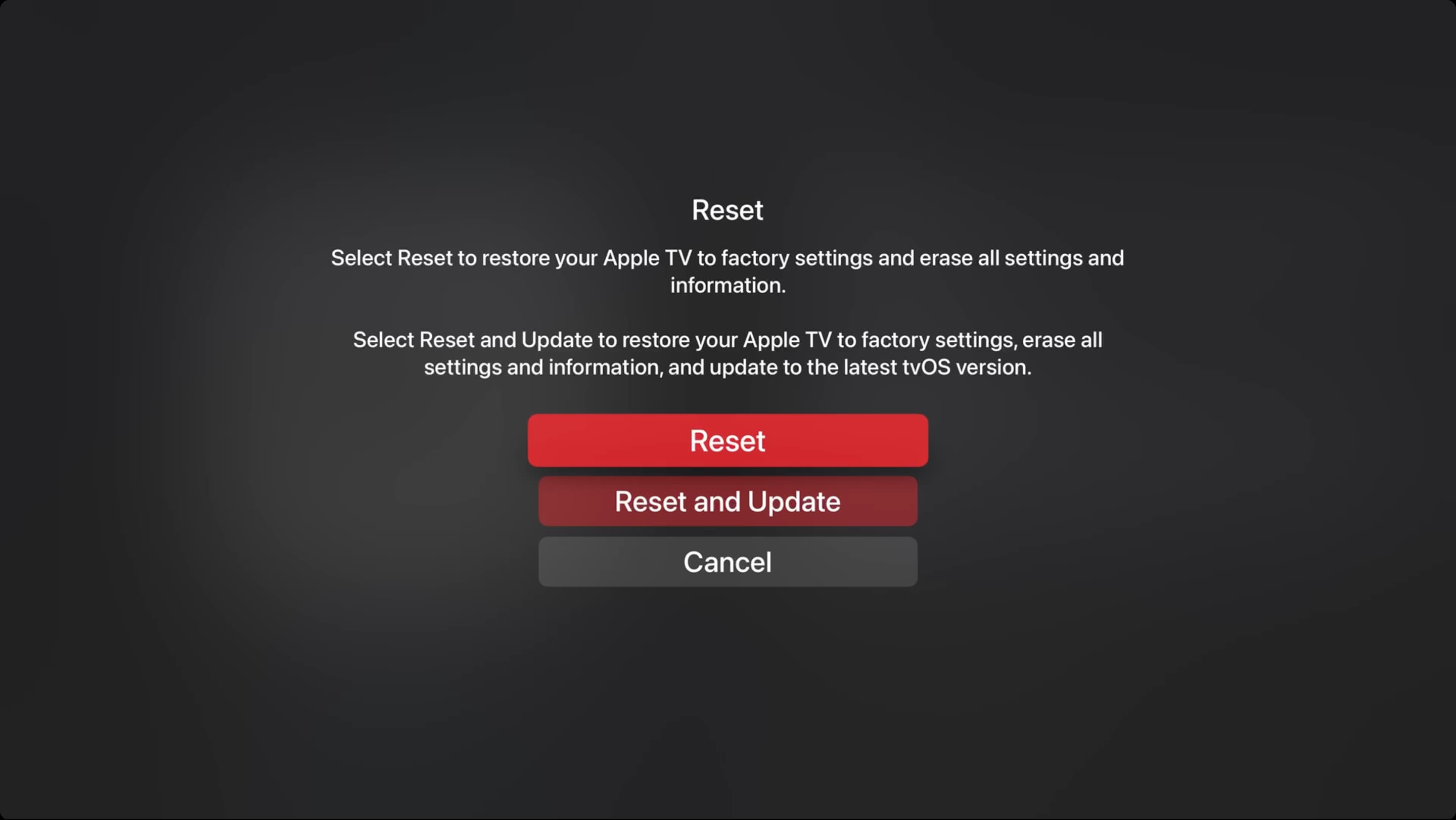
14. Contact Apple Support
Finally, if nothing else works, chat with Apple Support and get their opinion on this matter.
More Apple TV tips: